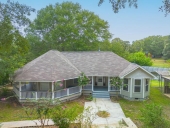




WIN/WIN REACTOR
*** detroit's urban permaculture resource center ***
SURPLUS PERMACULTURE DESIGN
*** consultation, design, implementation ***




Success has a Thousand Fathers , Failure is an Orphan
LOOK AT THE " SIMILAR THREADS " BELOW !




WIN/WIN REACTOR
*** detroit's urban permaculture resource center ***
SURPLUS PERMACULTURE DESIGN
*** consultation, design, implementation ***










 For the Good of the Crafts !
For the Good of the Crafts !
Success has a Thousand Fathers , Failure is an Orphan
LOOK AT THE " SIMILAR THREADS " BELOW !




WIN/WIN REACTOR
*** detroit's urban permaculture resource center ***
SURPLUS PERMACULTURE DESIGN
*** consultation, design, implementation ***




WIN/WIN REACTOR
*** detroit's urban permaculture resource center ***
SURPLUS PERMACULTURE DESIGN
*** consultation, design, implementation ***




www.dragonheaters.com
http://blog.dragonheaters.com/










Success has a Thousand Fathers , Failure is an Orphan
LOOK AT THE " SIMILAR THREADS " BELOW !




WIN/WIN REACTOR
*** detroit's urban permaculture resource center ***
SURPLUS PERMACULTURE DESIGN
*** consultation, design, implementation ***










Success has a Thousand Fathers , Failure is an Orphan
LOOK AT THE " SIMILAR THREADS " BELOW !













greg crawford wrote:here's one photo i have on my computer. you can get a sense of how the chimney, with its two fireplaces, sits in the middle of the space.
the side from which this photo is taken is where the mass material will be located. its piping will emerge through the brick wall which separates the two fireplaces. the mass material is planned to wrap-around both sides of the chimney, so that the bed hugs the chimney.
the combustion unit will be located at the other fireplace, which is not visible in this picture.
i will snap a few more photos to fill-in the rest of the area.
God of procrastination https://www.youtube.com/watch?v=q1EoT9sedqY




WIN/WIN REACTOR
*** detroit's urban permaculture resource center ***
SURPLUS PERMACULTURE DESIGN
*** consultation, design, implementation ***
 1
1




Praying my way through the day




WIN/WIN REACTOR
*** detroit's urban permaculture resource center ***
SURPLUS PERMACULTURE DESIGN
*** consultation, design, implementation ***






|
Do not meddle in the affairs of dragons - for you are crunchy and good with ketchup. Crunchy tiny ad:
The new kickstarter is now live!
https://www.kickstarter.com/projects/paulwheaton/garden-cards
|



